|
In 61 days, I will no longer have my maiden name, will no longer have to mark “single” on tax forms, and will be the happiest girl in the world. This is because I will marry my best friend at our parish in front of our family and friends, and thus become man and wife. But before we’re retired and sitting together on the porch swing celebrating many years of happy marriage, my fiancé and I have some work to do.
The journey of preparing in mind, body, and soul for the vocation of marriage has been an eventful one. Wedding planning isn’t easy. It has tested our patience and our communication skills. But on that Saturday afternoon 61 days away, when we commit ourselves to each other, we are making a statement. In our profession of vows, we will be showing the people in attendance that Christ is a central part of our lives, and that God is at the center of our relationship. Throughout our ceremony, we are inviting our guests to reflect on God’s love for them and to join us in sharing our faith as the Body of Christ. Sacraments are meant to bring people closer to Christ. Those present will witness this sacrament from wherever they are in their walk of life and faith journey, and hopefully have an encounter with God. We look forward to providing a moment of evangelization as missionary disciples through our marriage. My fiancé and I have learned a lot from the example of married friends and family who live out their Catholic faith. One couple that recently welcomed an addition to their family has been instrumental in answering questions we’ve had about what happens next and giving us advice throughout our marital preparation. They’ve helped my fiancé and I better understand what it means to be a young and newlywed couple, juggling jobs, obstacles, and life events, and doing it all with faith in God. They and so many others have shown us what it means to live out marriage with love for God and each other. In the Archdiocese of Washington, two other couples have been examples of commitment and love. Ephraim and Sussie, who have been married for 25 years, and Bob and Laurin, who have been married for 75 years, talk about their love stories and how they cherish each other to this day. Couples like these have had to work hard at their marriage through good times and bad—just as we will. Through it all, they keep God at the center of their relationships. During these next 61 days, I will pray for my future husband, for myself as a wife, and for God’s grace to be present through it all. We will work at our marriage, this is for certain—and it won’t be easy. But with communication, understanding, forgiveness, and prayer, we will make it. During the Pre-Cana course we attended a few months ago, we learned a few things about communication and prayer that I would like to impart to anyone, whether you are in a relationship, have great friendships, or are several years into your marriage. My fiancé helped me create a list of the top ten things that stuck out to us. I hope they help you, too!
For more resources on Marriage and Family, click here. Questions for Reflection: How can the example of married and engaged couples help those discerning marriage? Are there people in your life that you look to as witnesses of fruitful marriage?
0 Comments
Despite the overwhelming presence of Christmas decorations and holiday spirit in December, many people still gloss over Advent. They might notice the Advent wreath at Mass or the change in liturgical colors, but before they are able to ponder what any of that really means it is Christmas Day, the Son of God has been born, and they have done nothing to prepare for Him.
As a young teenager, it would usually take me a week or two to adjust from the Thanksgiving mindset to the Christmas mindset and by then it was already Gaudete Sunday, the third Sunday in Advent. I would find myself saying, “Father gave a great Advent homily today, I should definitely think about these themes this week,” or “Advent might be a good time to start praying more regularly.” Despite these thoughts, I would not think about the homily after Sunday and rarely tried to increase my prayer life during Advent. This seems typical for a lot of people. We come up with great ideas during Mass and then when we go home and promptly find other things to be concerned about. If we think about it, this is probably why we get reminded year after year of the ‘true meaning of Christmas’ … because despite knowing what Christmas is about, we don’t often take the proper steps to prepare our hearts and minds for the event. And yet, Advent is the perfect time to reignite our faith and start anew. It is a time to practice the virtue of patience and to prepare ourselves to be open and ready for the coming of Christ. As Pope Francis said on the first Sunday of Advent in 2013, it is also a time to hope: "Just as in each of our lives we always need to begin again, to get up again, to rediscover the meaning of the goal of our lives, so also for the great human family it is always necessary to rediscover the common horizon toward which we are journeying. The horizon of hope! This is the horizon that makes for a good journey. The season of Advent, which we begin again today, restores this horizon of hope, a hope which does not disappoint for it is founded on God’s Word. A hope which does not disappoint, simply because the Lord never disappoints! He is faithful! He does not disappoint!" Pope Francis is calling us to reconnect with the beautiful mysteries of Advent, to rediscover ourselves, our faith, and the purpose of family. He is asking us to rediscover hope. Hope is not easy to have by itself, but it is easy to find when we prepare ourselves and when we seek to understand the mysteries of Christ’s birth. But preparing ourselves for the Lord’s coming is easier said than done. There are many ways that we can embrace this Advent season with our parish communities, friends, and families. Consider trying out a few of these methods this year:
These are just a few suggestions to help you on your Advent journey. There are of course many ways to prepare for the birth of our Lord. The important thing is to prepare. Let us challenge ourselves each and every day to open our hearts to the Lord. Let us embrace this Advent season so we might be ready to receive the Son of God on Christmas morning. For more information on Advent, check out our Advent Resources page here. Nicholas Shields is a Young Professional in Washington, D.C. As I wrote this post, the Catholic University of America was preparing to celebrate Homecoming, when over 1,500 alumni and their guests returned to their alma mater. The weekend itself is a joyful occasion, a chance for classmates to catch up with one another and see what has occurred in the time since graduation. While life often takes alumni down different paths, Homecoming offers everyone the opportunity to reconnect with the place that, and the people who, helped launch the next chapter, whether it was one of service, religious vocation, family life, and/or employment. Homecoming itself reflects the willingness of the University to throw open its doors to welcome back all, no matter how long they’ve been gone or why they stayed away. It’s a tried-and-true model and it’s along these lines that the Church opens her doors to those who might have fallen away, whether because of a poor experience or because of a lack of interest or engagement. Initiatives such as “Catholics Come Home,” or the Archdiocese of Washington’s “The Light is On For You,” and similar diocesan programs nationwide, seek to welcome back Catholics who have been absent from the life of the Church. The projected tone and nature of these programs is of authentic openness and welcome — free of any judgement or bitterness. The goal is to encourage those who have been away to re-encounter the perfect love and understanding of our Lord as manifested and offered by His Church. The doors of the Catholic Church are open year-round for those seeking something better than what the world offers but there are moments in the liturgical calendar which emphasize and focus on refreshing one’s spiritual life such as Advent and Lent. Similarly, the invitation to participate in or observe the sacraments being celebrated can be an emotional catalyst for one to come back or renew his or her baptismal promise. Emotions, such as the awe of witnessing a reverent First Communion or religious profession, the joy of a marriage, or the hopeful rawness of a funeral, can move one to respond to a previously suppressed or unrecognized call to reconciliation with the Church. These “moments of return” can awaken a longing for an interior peace that only the Lord can provide. As Pope Francis encourages: Maybe someone … is thinking: my sin is so great, I am as far from God as the younger son in the parable [of the Prodigal Son], my unbelief is like that of Thomas; I don’t have the courage to go back, to believe that God can welcome me and that he is waiting for me, of all people. But God is indeed waiting for you; he asks of you only the courage to go to him… I have always pleaded, “Don’t be afraid; go to him; he is waiting for you; he will take care of everything.” We hear many offers from the world around us, but let us take up God’s offer instead: his is a caress of love. Archbishop Sheen, the great evangelizer who brought millions around the world into an encounter with the Lord via his weekly TV program, Life is Worth Living, encourages us to seek out those who have everything to gain by entering into Christ’s body on earth but are currently missing out: What was the first word of our Lord’s public life? That’s the key to preaching. It was ‘come.’ Come. Come to Me. Be enflamed with my Truth. Be on fire with my Love. And what was the last word of our Lord’s public life? It was ‘Go!’ First we come, then we go! (Sheen, “The Art of Preaching,” 1972) Just as the gift of faith was freely shared with each of us, how enthusiastically, then, we must go and share the Good News with everyone on the highways and byways — we cannot keep it to ourselves! As we begin to prepare for the celebration of our Lord’s birth during the Advent season in a few weeks, why not invite someone to join you for the beginning of a new liturgical year — and the beginning (or rediscovery) of something deep within that person that can only be the desire to know our Savior. By doing so, by planting the seed of the Word in people’s minds and hearts, by boldly meeting people where they are in life rather than waiting for them to come to us, each of us who are sharers in the Church’s ministry can cause much rejoicing in heaven (Luke 15:1-7). Let us embrace those who have been away for a long time, crying out, “Welcome home!” 9/13/2016 Communicating Like Chrysostom: Growing Your Skills in Speaking for the New EvangelizationRead NowSeptember 13th is the feast day of St. John Chrysostom (c. 349-407), one of the most celebrated Fathers of the Early Church. Born in Antioch, John Chrysostom chose a simple life as desert monk, but was kidnapped and forcibly made the Archbishop of Constantinople, where he spent much of his life fighting against corruption— especially on behalf of the poor and widows. John earned the nickname Chrysostom—Greek for “golden-mouthed”—based on his reputation for eloquent speaking and skills in public preaching, which converted the hearts of many listeners. John Chrysostom exemplifies the value of good communication as an element of effective evangelization. Whether you’re a ham or have speech anxiety like most, at some point or another, you might be called upon to speak publicly—especially if you work or volunteer in the church. Whether you are preparing to deliver a parish talk, a personal witness, or other public presentation, no matter the size, spending some effort crafting your communication skills can be a great benefit to sharing your faith. Know your Who, What, and Why St. Paul, a man who described his call “to preach the gospel, and not with the wisdom of human eloquence,” (1 Cor 1:17), nevertheless frequently found himself speaking in front of crowds as part of his mission as an Apostle and disciple of Christ. Paul speaks very differently to mature Christians and the pagans of Athens (Acts 17:22-34). The audience (“who”) shapes his main points and examples (“what”) and the purpose for speaking to them (“why). Prepare by creating an outline that clearly and succinctly states your “who, what, and why.” Write it down and refer back to it throughout the composition stage. A Little Humiliation Goes a Long Way In seminary homiletics courses, preachers-in-training are frequently subjected to the sometimes humiliating exercise of having their practice homilies recorded. They then watch the playback to evaluate their delivery. In some form or another, that can help anybody. It’s probably going to hurt … but you actually get used to it over time and can learn a great deal throughout this process. Practice in front of somebody. (If you’re too embarrassed at first, use your dog, cat, or an inanimate object.) Exercises like these are designed to help public speakers become more self-aware, not self-conscious. People Watch Pay close attention to your favorite speakers, teachers, or preachers and try to articulate precisely what makes them engaging and unique—not just their content, but things like timing, rhythm, their order of argument, when and when not to use humor, etc. Pope St. John Paul II and Archbishop Fulton J. Sheen were masters at this. Be Yourself As you reflect on how you speak, name gifts and qualities that others identify about your particular style. Develop those. Remember, we are not all called to be rhetoricians and orators, or even great speakers, but faithful communicators of the Gospel. Not all, St. Paul says, are even called to be preachers or teachers (cf. Ephesians 4:11). To advance his kingdom, God has entrusted each of us with a message and a mission and nevertheless promises to “equip the holy ones for the work of ministry, for building up the body of Christ” (Eph 4:12). St. John Chrysostom, Pray for us! “Love is…the fundamental and innate vocation of every human being.” (John Paul II, Familiaris Consortio, 11). Mankind was created in the image and likeness of God in order to love and to be loved. This divine vocation is made possible by the Father’s love for us: we love because we were first loved (cf. 1 Jn 4:10). In October of 2014 and 2015, bishops from around the world met at the request of Pope Francis to discuss human love, specifically in the context of marriage and family. The themes touched upon included "the pastoral challenges of the family in the context of evangelization" as well as "the vocation and mission of the family in the Church and in the contemporary world." After two years of discussion, reflection, prayer, and deliberation, the Holy Father compiled the ideas gathered from the synods into a post-synodal Apostolic Exhortation, Amoris Laetitia. Using both poetic and approachable prose, Pope Francis shared with the Church his insight into the joy and dignity of human love—writing on topics such as the Church’s teaching on marriage and family, the education of children, and pastoral strategies for marriage preparation. On July 12th, Center Director Fr. Frank Donio, S.A.C. used the wisdom found in Amoris Laetitia to present on its pastoral implications for marriage preparation using Facebook Live. You can view his presentation here. Below are nine quotes and lessons from this historic document that are especially pertinent to couples preparing for marriage and those preparing couples for marriage. I invite you to spend some time reading these quotes, reflecting on them, and implementing the truths they contain into your understanding of marriage and marriage preparation. 1. Marriage Preparation begins at birth Marriage preparation begins from birth – we are born into families, grow up in the context of family, and are surrounded by families throughout our lives. For this reason, Pope Francis says that “Learning to love someone does not happen automatically.” It is a lifelong process which we must choose to grow in each day. 2. Quality of content over quantity. As couples gather together to prepare for marriage, Pope Francis recommends that we do not overwhelm them with every single resource from the Catholic Church. Since the time of marriage preparation is usually brief, the Holy Father recommends sharing quality information—such as the fundamental aspects of marriage, church teaching, and a basic understanding of the kerygma, or story of salvation. Marriage preparation should be comprehensive, but it cannot be exhaustive or total. Be prudent and intentional about the quality and quantity of information you are sharing. 3. Highlight prayer as an essential part of marriage. Prayer is fundamental not only to the Christian life, but to any vocation. For the lifelong commitment of marriage to succeed, it must be rooted in the daily prayer of husband and wife. This prayer has two dimensions: personal and communal. Personal time of prayer and reflection ensures that each spouse is growing in their relationship with Christ, while prayer as a couple unifies the spouses, improves their communication with one another, and grounds their relationship in Christ. When both personal and communal prayer are alive within a marriage, the relationship of husband and wife is being revitalized and strengthened in such a way that can reflect the love of the Trinity and pour out into society as a whole. 4. Marriage is a life-long commitment. Sacraments and major life events should be celebrated in a way outside of our ordinary day-to-day life. Marriage is no different. We are, in fact, celebrating something beautiful and life-changing. However, we should not let ourselves be carried away by the details of planning the “perfect wedding day.” Pope Francis advises couples not to get too invested in the consumption of material goods or the planning of the wedding day itself, inviting them instead to focus on rooting their relationship in Christ, the sacraments, and prayer. 5. Marriage is more than the wedding ceremony. Marriage preparation encompasses much more than a formal program, retreat, class, or a weekend geared to meet a checklist for the church. Formal marriage preparation should help couples discover the dignity of the married vocation and set their sights on the life they will make together as “one.” The ceremony is not “the end of the road,” as Pope Francis states, but a necessary part of the sacrament. We are called to help couples see the wedding ceremony as a launchpad moving them forward in their life-long calling. We are furthermore called to give couples the tools and strategies for successfully working through trials and difficult moments together. 6. Marriage is “total.” The Catholic Church affirms marriage as an indissoluble union grounded in fidelity, fruitfulness, freedom, and totality. Marriage is not simply a convenient relationship, a partnership with someone who makes you happy, or a public display of love—though it can comprise all of those things. The Church understands that marriage is a sacrament administered by man and wife, witnessed by the Church community, and blessed by God. It is a serious but heroic, joyful, and sanctifying undertaking “until death do us part.” 7. Give couples the tools they need to detect danger signals in their relationships and respond constructively. Preparation for marriage should be filled with joy. However, it is still a time of preparation. Each relationship will have moments of unity and conflict. A couple may agree on issues like raising children or budgeting, while disagreeing on how to spend free time or how to best communicate. It is important for each couple to be aware of any sources of woundedness or conflict in their relationship before the wedding day in order to work on constructive practices for moving forward. 8. Explain the significance behind the liturgical celebration and the meaning of each of its signs. While we are not called to get “wrapped up” in the wedding day, we are called to dispose ourselves to the profound significance of the liturgical celebration of marriage. Marriage is a sacrament. To enter into this sacrament is of vast significance. For this reason, it is important to learn more about and understand the meaning behind the signs used in the liturgical celebration – the rings, the white dress, the vows, etc. Let us help couples preparing for marriage enter into the wonder of the sacrament through the richness of the liturgical celebrations of the church. 9. Help couples preparing for marriage discover or rediscover the dignity and beauty of marriage. It’s tempting to be disheartened by the lack of successful marriages we see in the world around us. Marriages can be overwhelmingly broken, destructive, or lifeless. This is not part of God’s original plan for marriage, and Pope Francis wants to encourage engaged couples to discover or rediscover the dignity and beauty of marriage as a liberating, sanctifying, unconditional relationship in which each spouse is loved and affirmed. How can you support married couples or those planning on getting married? How can you change the marriage narrative to better reflect God’s plan? For more resources on Marriage and Family, please click here.
When I was younger, my family loved to watch the show “Extreme Makeover: Home Edition,” where a family’s home is rebuilt for them and everything is made-over and new. On the last day, the family sees what their house has become in a big reveal. When I think about Lent, I compare it to a time of preparing my heart for the biggest makeover and surprise “reveal” in my faith: Easter Sunday.
Prayer. Something new for me this year is a daily prayer journal of reflections on the readings from each day of Lent. I have found myself able to look forward to this prayer journal each morning, and have even found a special place to reflect and start the day off on the right foot. My hopes are that this daily prayer journal becomes a habit for starting each day with God in prayer and silent reflection. One interesting aspect of this journal is that every few days there is a reflection geared towards women of faith such as Mother Mary, St. Veronica, and St. Mary Magdalene de Pazzi. They are a few women who I am excited to reflect upon this Lent. As part of this daily journal exercise, I am meeting with a few other friends of mine who are also on this Lenten prayer journey. We discuss our thoughts, pray for each other's intentions, and encourage each other to be faithful to prayer. I think this community aspect, combined with personal prayer, will help strengthen my resolve for peace and prayer this Lent and “remodel” my prayer life. Fasting. Every year, people decide what they should “give up for Lent.” Many times, Lent gets combined with a New Year’s resolution or a diet plan. Although taking a “fast” from something is an important way to remove distractions from one’s life and become closer to God, the purpose is often lost when it involves giving up something like desserts and sugar. I have challenged myself this Lent to not only give up something, but also to add something on. For example, I have decided to fast on Wednesdays in an attempt to have a reminder on that day of Christ’s suffering in the desert. I have also added a daily prayer routine to my life in an attempt to form a prayerful habit to last longer than these 40 days. Another example comes from my 11 year old sister, who has decided that she will be giving up the few hours she spends watching TV each day to spend more quality time with the people in her life, like our parents. Her strength is admirable, and if she keeps with it, she will feel “made-over” with love for others. Almsgiving. This Lent, my class is in charge of distributing CRS Rice Bowls to the school, teaching the school about the purpose behind rice bowls, and collecting them all at the end to donate to CRS. The focus each week of Lent includes a new country to think about, pray for, and learn about in hopes of empathizing with the people there. My 2nd graders have only begun Lent, but some are already starting to understand that others are not as blessed as they are in Washington, DC. On Friday, the topic of severe hunger came up, and some students didn’t realize that other people in the world do not have breakfast each morning, or that some people do not have homes to go back to at night. This empathetic realization from a few students helped them connect and compare their own lives to those of others. This made me appreciate the CRS Rice Bowl project even more, knowing that this operation is happening all over the U.S.—reminding Catholics of how blessed we all are to be living the way we do. This Lent, I have my own personal rice bowl which I intend to fill up with donations and hope to “makeover” by using it to give to others in almsgiving. For the remaining weeks of Lent, I leave you with this one challenge: you can rebuild, remake, or remodel your life, but the end goal is simple: prepare your hearts. Use these 40 days to pray as Christ did in the desert, fearlessly and fervently. May your actions and habits that help you grow during Lent also transfer into the rest of the year. Aim to give of yourself to others in many different ways, imitating Christ’s sacrifice for the world. Get ready for the “big reveal” when you are “made-over” in His love and are ready to celebrate the empty tomb on Easter Sunday. Then we can say, like in the home-makeover show, “Move…That….Rock!” For more Lenten Resources, please click here. At this point, we are almost a week into Lent. Many are still wondering, “What am I doing differently this year?” Have we given up chocolate again? Have we promised to be nicer to our brothers and sisters for the 3rd year in a row? Have we committed to give up cursing for all forty days? These are all good questions and ones that we should consider as we continue our Lenten journey. However, the real question is: “is what I am doing now preparing me for Christ?” For me, this is not an easy question to answer. In fact, every year I hate thinking about it. Why? Because it reminds me that I haven’t done enough. It reminds me that I do not have Christ at the center of my life.
It is no secret that we all struggle to keep Christ at the center of our lives, but Lent provides an opportunity to pull back the curtains, open the door anew to Christ, and walk with him. This sounds great, but many of us dread it. We dread committing too much to this Lenten journey, which is why we often turn to giving up candy or junk food instead of giving ourselves wholly and fully to Christ on the cross. Despite this dread, we have nothing to be afraid of. We have only to look at this past Sunday’s Gospel to see that we are not alone: “Jesus returned from the Jordan and was led by the Spirit into the desert for forty days, to be tempted by the devil” (Lk. 4:1-2). Personally, this reminder that Christ also went on a “Lenten journey” of his own helps me to commit more fully to my own journey. Jesus is willing to walk this path with us, so why not commit and walk with him? As reassuring as this is, I still find the Lenten journey difficult. And it should be, for what will we really gain unless we have to work hard to be true followers of Christ? Journeys have their ups and downs, high days and low days, successes and defeats. Our Lenten journey is not any different. When the journey gets tough, we need look no further than the Holy Family for reassurance that we are on the right path. When we look at Joseph, we are reminded to be silent and to listen to God’s word, to find strength in work and family. When we look at Mary, we are reminded that despite the pain and suffering, she said “Yes” to God and gave everything to Him—all the way to the foot of the cross. Finally we look at Jesus and we are reminded of why we take up the cross. In January, Pope Francis said “Let us not waste this season of Lent, so favourable a time for conversion! We ask this through the maternal intercession of the Virgin Mary, who, encountering the greatness of God’s mercy freely bestowed upon her, was the first to acknowledge her lowliness and to call herself the Lord’s humble servant.” During this season of Lent, let us embrace the journey, the good days and the low, because every day is a new opportunity on the path to Christ. For more resources to guide you through Lent, click here. Nicholas Shields is a young professional working in Washington, DC. Having just celebrated the Second Sunday of Advent, we heard in the First Reading from Isaiah how, “Every valley shall be filled in, every mountain and hill shall be made low; the rugged land shall be made a plain, the rough country, a broad valley. Then the glory of the LORD shall be revealed...” What always strikes me about this reading is how the Lord destroys every obstacle in His way, and all that stands against Him is defeated. This alone is important to remember I think, because in the midst of so much activity and stress it is easy to forget that our Lord is always the one in charge and has the power to wash away all of our blemishes and sins. Everything with imperfections is made perfect in Him.
Advent is a time of preparing ourselves for the birth of our Savior and the second coming of Christ. The Church gives us this liturgical time so that we may ensure we are ready for Christ’s entrance into our midst on the Solemnity of the Nativity of our Lord and prepare for how “He will come again in glory to judge the living and the dead.” So, Advent is a time of great hope, expectation, and preparation, but how exactly can we prepare our hearts for Christ? How can the Lord wipe away my own sin, my own imperfections so that I can worthily prepare for His Coming? Partaking in the Sacrament of Reconciliation is a perfect way to prepare our hearts for Christ’s coming and be ready for His arrival. We hear in the Second Reading of this past Sunday how the Lord, “is patient with you, not wishing that any should perish but that all should come to repentance.” The Lord never tires of extending forgiveness to us, He is ever merciful. He wants the best for all of us, even when sometimes we don’t know exactly what that is. Just as in Isaiah, the Lord defeats and washes away all of our sins and imperfections with this wonderful Sacrament. Pope Francis during one of his Wednesday audiences said, “every time we go to confession, God embraces us.” With all of the different parties and events during this time of year, with all the invitations, there is one invitation that you should be certain to consider. The Lord has already extended to us the invitation, an invitation that prepares us for Christ’s coming by partaking in the Sacrament of Reconciliation. The question is - will you accept it? Conor Boland is a College Ministerial Intern at One Bread, One Cup and is an undergraduate at The Catholic University of America. For more information on Reconciliation and the Advent season, please see our Advent Resources! This past Sunday, we celebrated the First Sunday of Advent, the time of preparation for the coming of Christ. This Advent season also signals the beginning of the liturgical New Year. Now, I’m the kind of girl that has been secretly listening to Christmas Carols since mid-November (with headphones and lowered volume so no one knows my secret!) so Advent is one of my favorite times of year. As a little girl, I loved the buildup to Christmas and loved helping my mom prepare our house for the torrent of annual Christmas events. From decorating the tree to baking cookies, I loved it all.
When we were little, my mom modeled an activity we did in school, placing an empty manger on our mantle with a bowl of straw. She explained to my brother, sisters, and me that Advent was about preparing for Christ’s birth and we had to prepare a comfortable crib for him by filling the manger with pieces of straw. She encouraged us to do kind things for those we knew and when we did to place a piece of straw in the manger. Throughout Advent we delighted in finding ways we could add more to the manger. The one rule that she had was that we could only place straw in the manger quietly, without bragging of our good deeds to each other, and we had to decide personally what qualified to place straw in the manger. The straw grew and grew and by Christmas the manger was full, ready for Christ. Although this activity seems small in the hustle and bustle of the Advent season, it taught my siblings and me a lot about what the season was really about. Even as children, my mom strove to make sure that while we could get involved and excited about preparing for Christmas, we had to understand the true meaning behind the season. Advent, she always explained, was about preparing for the coming of Christ and not simply getting excited for Santa to visit. While we celebrate Advent and Christmas in many different ways, the important thing to remember is just how miraculous the Incarnation truly is. The miracle of the Incarnation is that Christ was made known to us in human form, to ultimately sacrifice Himself for us. While this time of the year has many stresses as we try to prepare for all that is expected of us, keeping the “true meaning of Christmas” in mind throughout Advent is a good habit to get into. As you begin this Advent season, I encourage you to take some time to remember what we are preparing for. The selfless love that Christ demonstrates is what we celebrate this Advent season. Take a moment to step back and reflect on how you can prepare yourself for His coming. Rebecca Ruesch is the Blog Editor for the Catholic Apostolate Center For more information, check out the Catholic Apostolate Center's Advent Resource Page! This Sunday is the Fourth Sunday of Advent, the last Sunday before we celebrate the birth of Christ at Christmas. These four weeks are an opportunity for us as Catholics to take time to reflect on our spiritual lives. As we’ve seen in posts throughout this Advent season, we must look at Advent as a journey, both as a time to prepare for Christ’s coming this year, but also as a way of looking at the future to prepare for Christ’s second coming. Advent is a time filled with joy and introspection, where we strive to find the quiet moments within a busy season.
This Sunday, the first reading from Isaiah tells of the eventual birth of Christ. Isaiah prophecies that the Lord will give mankind a sign, a son born of a virgin mother, to be called Emmanuel. St. Paul, in the second reading, reminds us that Christ was put here on earth “as Son of God in power, according to the Spirit of holiness. (Isaiah 1:4) Then in the gospel reading from St. Matthew, we hear the story of the nativity, referencing the fulfillment of Isaiah’s words. Here it is reiterated that Christ will be called Emmanuel, which means “God is with us.” This is a good reminder at the conclusion of the Advent season. The gospel tells us that Christ’s coming is the true manifestation of God here on earth, and the name Emmanuel is a literal representation of this. The name Emmanuel is also a reminder to all of us that God is with us, even now in our everyday lives. It is easy during Advent or other important liturgical seasons to feel God’s presence more strongly. During the Christmas season we hear stories of incredible generosity and kindness, many in the name of Christmas spirit. Food banks and Homeless Shelters and other social welfare institutions report higher donations and volunteers during the holidays. Generosity and volunteering of time is always a rewarding way to live out the gospel, but to truly embrace the spirit of Christ as Emmanuel, we must do our best to keep God with us throughout the entire year, not just during holiday seasons. Pope Francis’s message of the importance of ministering to the poor and marginalized is applicable here especially. The Holy Father encourages us to see the face of God in everyone, especially in those who are most in need. We must remember that God is with us, in every aspect of our life, and we must strive to carry the spirit of kindness and generosity throughout the whole year. Rebecca Ruesch is the Blog Editor for the Catholic Apostolate Center Waiting. Who likes to wait? As far as I can remember, I have never been very patient. I speak too fast, I start projects but often never finish them, and I tap my foot in long lines while sighing loudly so everyone can hear me. I’m very impatient, and recognize that I could always use more humility in my life. Over time and through prayer, I have begun to change my perspective. I realized that waiting can be used as a time for preparation, a chance to reflect. It can be a time to mend, a time to forgive or to be forgiven, and it can also be a time to rid my life of things that encourage an impatient lifestyle. In Advent especially, I have sometimes found it difficult to focus my attention on preparing my heart for Christ.
As Catholics, we do quite a bit of waiting, especially during Advent. It is a time to prepare our hearts and minds for the coming of Christ Himself. These four weeks help us remember why we need Jesus in our lives and in our hearts. In the past few weeks of blog posts, we have seen reflections on the journey that is Advent. But, Advent is also a time to remember that the waiting is not over on Christmas morning when we see the baby Jesus in the manger. In fact, we are in a constant state of waiting and preparation. We wait for new iPhones. We wait for a new year. Then we wait again for Christmas a year later through another Advent. But is that all we are waiting for? When we look at the big picture, we must realize that we are also waiting for Christ’s second coming. This is waiting for something that really matters, something that we need to be entirely ready for. In the Gospel of Matthew, we are reminded that “you know neither the day nor the hour” when Christ will come again. As Matthew reminds us, we need to “stay awake” and prepare for this second coming, not just during Advent but throughout the year. (Matthew 25:13). At the end of time, Jesus will come again, and seek our hearts. He wants us, wholly and fully. This Advent, we will wait for Jesus to come into the world, reminded that in Him we seek goodness. In Him, we put our trust. We leave our impatient lives and tendencies in Advent, and we enter into the celebration of Christ at Christmas. While preparing our hearts at Christmas, we are readying ourselves for the day He comes again. Will you be ready? Krissy Kirby is a Senior Early Childhood Education Major at The Catholic University of America This past Sunday marked the beginning of Advent, my favorite time of year. What I love most about Advent is that it is four weeks long, and the opportunities to celebrate and prepare for Jesus’ birth are abundant. But, many people forget this. Just last Friday, people lined up at midnight outside Wal-Mart and bought everything on their Christmas list in a six hour blur of big screen T.V.s and elbows. Others rushed out to buy a Christmas tree, and decked their house in every last light they could find in the attack. And, by Friday evening, they were “done” preparing for Christmas and back to life as usual.
My own personal version of this would be when my grandma gives me one of those “Christmas Countdown Chocolate Calendars,” the ones with a piece of chocolate behind each day leading up to Christmas—and its gone by December 5th! People no longer spend all of Advent preparing for the birth of Jesus Christ, they do what needs to be done, as fast as possible, and then forget he’s coming until the 23rd. Advent is four weeks long (and so are a lot of Christmas sales!) and as difficult as it may be, we should try to keep that in mind. Instead of setting up the house or buying all the gifts in one day, spread it out! Enjoy the preparations. Do something small every day in anticipation for the birth of Christ. Make an Advent wreath with your family (or roommates!) and light a candle at dinner; say an extra prayer every evening; pray Vespers before Mass. The most important things is that we don’t fall asleep in the wait for Jesus, that we remember every day—not just when they light the Advent wreath at Mass on Sunday or when The Grinch is on TV or Wal-Mart has a big sale—that Christ is coming and we must be ready. And keep it to one piece of chocolate a day from the Advent calendar. Your stomach will thank you and you’ll have more candy toward the end of the four weeks! Eileen Welch is an undergraduate student at The Catholic University of America and is Regent of Catholic Daughters Court Catholic University As emerging adults in the Catholic Church many times we are asked the question why are you Catholic? or why do you remain Catholic? Sometimes asked from friends who fell away and sometimes asked by others in the Church that are surprised to see you present and active. We, as a Center, would like to share with you, at the end of each month, why we are Catholic and where it is that we find joy in our faith.
“We are an Easter people and ‘Alleluia’ is our song!” -St. Augustine of Hippo I first heard this quote several years ago, but it wasn’t until recently that I began to understand it more fully. Some of you may be wondering why I am writing about Easter in October, but this is exactly my point! We arealways an Easter people, and we should constantly direct ourselves towards the joy of the Resurrection! Nothing orients one towards Easter quite like participating in RCIA. This year, for the first time, I am helping to prepare catechumens, candidates, and confirmandi for full initiation into the Church during the Easter Vigil mass. This group is distinct from other RCIA groups because it is composed entirely of college students, both graduate and undergraduate, who are studying at the Catholic University of America in Washington, D.C. Every Thursday night, the ten or twelve students come together to learn about the faith through catechetical sessions presented by a member of the theology faculty or one of the chaplains of the university. Some students come straight from rugby practice, others from study sessions in the library, and a few grad students sacrifice time away from their young families to join us. What brings them all together in the campus ministry lounge on Thursday nights is a nascent love for the Church and a deep desire for the grace imparted through her sacraments. To put it simply, even in October they are oriented towards the joy of Easter. The Second Vatican Council’s Pastoral Constitution on the Church in the Modern World (Gaudium et Spes) opens with the following words: The joys and the hopes, the griefs and the anxieties of the men of this age, especially those who are poor or in any way afflicted, these are the joys and hopes, the griefs and anxieties of the followers of Christ. Indeed, nothing genuinely human fails to raise an echo in their hearts. In the next few days, the Church celebrates not only the joy of “All Saints” and the hope of “All Souls,” but we also share in the sorrow of the families and communities whom the faithful departed have left behind. It is this sense of community that calls others into the fold. As members of the Church we are called to share in the burdens of our fellow man, but we do so with the recognition of what God-made-man has already done for us. However heavy our loads, we have hope in Christ who shouldered all of our burdens and sacrificed himself for our sins. We share the grief of others because Christ has shared in our grief; but we must also share the hope and joy that we have in Him . . . the same hope and joy that brings twelve college students together for an hour each week on a busy school night to reflect upon the beauty of our faith. Where do I find joy? In the catechumens who long for Easter – even in October! – and yearn to become members of our community of faith. Leave it to the neophytes in the faith to teach us something about Christian joy! Easter in October? I’m all for it! Brett Garland is a Collaborator with the Catholic Apostolate Center. This post was originally published by the Catholic Apostolate Center in October 2012 Growing up in a farming community in southern New Jersey (yes, New Jersey does have farms, that is why it is called the Garden State), I learned a little something about soil that is good for planting and soil that needs work, sometimes a great deal of work, until planting can happen. Good soil does not just “happen”. There is preparation and proper nurturing, even times of rest so that the soil is best. In his recent encyclical Lumen Fidei, Pope Francis talks about “good soil,”
“In the parable of the sower, Saint Luke has left us these words of the Lord about the ‘good soil;’ ‘These are the ones who when they hear the word, hold it fast in an honest and good heart, and bear fruit with patient endurance’ (Lk 8:15). In the context of Luke’s Gospel, this mention of an honest and good heart which hears and keeps the word is an implicit portrayal of the faith of the Virgin Mary” (Lumen Fidei, n. 58). As we celebrate the Solemnity of the Assumption, we are offered by the Church the great example of the Blessed Virgin Mary, ever-faithful disciple, who witnesses for us the way to live well our baptismal call as disciples and apostles of Christ. “By her complete adherence to the Father's will, to his Son's redemptive work, and to every prompting of the Holy Spirit, the Virgin Mary is the Church's model of faith and charity” (Catechism of the Catholic Church, n. 967). By witnessing faith and charity we live well our baptismal vocation. Our vocation as baptized is our primary vocation. All of the other vocations as married, single, consecrated, or priest are all secondary to this primary vocation as follower of (disciple) and sent by (apostle) Jesus Christ. Each is a way one can live out the primary vocation. How does one decide? Through a process of discernment, one is called to be informed, pray, make a choice, and take action. I make it seem easy. The process is not an easy one, but like making “good soil,” it is necessary in order to make a truly informed choice about how to live our vocation as a disciple and apostle. You might not be ready to make a choice about what way to live this vocation for life, or maybe you have done so already, but living it out as a disciple and apostle is what all of us are called to do. The Blessed Virgin Mary can assist us in our discernment of our apostolic vocation in life and in living it out faithfully and well, truly being “good soil.” May we join together in the prayer of Pope Francis at the conclusion of Lumen Fidei. “Mother, help our faith! Open our ears to hear God’s word and to recognize his voice and call. Awaken in us a desire to follow in his footsteps, to go forth from our own land and to receive his promise. Help us to be touched by his love, that we may touch him in faith. Help us to entrust ourselves fully to him and to believe in his love, especially at times of trial, beneath the shadow of the cross, when our faith is called to mature. Sow in our faith the joy of the Risen One. Remind us that those who believe are never alone. Teach us to see all things with the eyes of Jesus, that he may be light for our path. And may this light of faith always increase in us, until the dawn of that undying day which is Christ himself, your Son, our Lord!" Fr. Frank Donio, S.A.C. is Director of the Catholic Apostolate Center. As I settle into my second year at a parish in South Jersey, and find myself responsible for the entirety of programs like First Eucharist preparation and family ministry, I’ve noticed that I must also find my own solution to a continual tension involved in running such programs. I’m calling it “the tension between the urgent and the important.”
There’s a sense of being bogged down by stuff that isn’t important in itself, but is necessary for the important stuff to happen. I don’t want to focus all my sacramental preparation time on ensuring the kids all have baptismal records; I want to make sure we have a coherent plan for how we’re forming them after baptism. I have to be able to find time to look beyond these minor concerns (even if I can’t move on without them) to notice and evaluate where the parish is headed in our ministry, and if that ministry really is allowing Christ to change hearts. Different personalities will use different strategies for managing this tension, so I can’t offer much of an explicit road map. However, we can all agree - it must be managed. If we don’t make time for the visionary in our ministries, we never move forward towards the vision. I understand that this year’s ministry won’t quite comprise the full realization of our eschatological hope, but I’m also in my last year at this parish, and I don’t want to accept continually the deferment, “Next year, we can actually catechize well.” As I contemplated this professional frustration, I realized there was an analogous tension in my life: contemplative prayer. I’ve often heard cited that “finding the time to pray” is difficult, but each of us needs to take a good hard look at what exactly are the things which supercede our prayer lives. As a parish minister, mine are especially ironic - “I can’t pray now, I have to get to work... so that I can balance envisioning the direction of the Church with executing the logistics involved.” I may be well-intentioned, but that prioritization isn’t ultimately fruitful. I cannot say that I am doing the work of the Church, whether important or less important, if I am not also praying through the work of the Church. “Everyone of us needs half an hour of prayer each day," remarked St. Francis de Sales, "except when we are busy—then we need an hour." This pithy quote is a roadmap to balancing the tension between my active ministerial work and the vision, which in this case actually is the Kingdom of God. The Catechism also calls me out: “The choice of the time and duration of the prayer arises from a determined will, revealing the secrets of the heart. One does not undertake contemplative prayer only when one has the time: one makes time for the Lord, with the firm determination not to give up, no matter what trials and dryness one may encounter” (2710). Isn’t it ironic that the trial can be a temptation to plan out the best work of the Church? I have to be able to make (not “find”) time to look beyond my work (even if the Church couldn’t move on without it) to notice and evaluate where I’m headed in my prayer life, and if that prayer life really is allowing Christ to change hearts... especially my own. I don’t want to promise continually, “Tomorrow, I will actually pray well.” Laura Berlage serves as an Echo Faith Formation Apprentice in the Diocese of Camden, NJ |
Details
Archives
July 2024
Categories
All
|
About |
Media |
© COPYRIGHT 2024 | ALL RIGHTS RESERVED



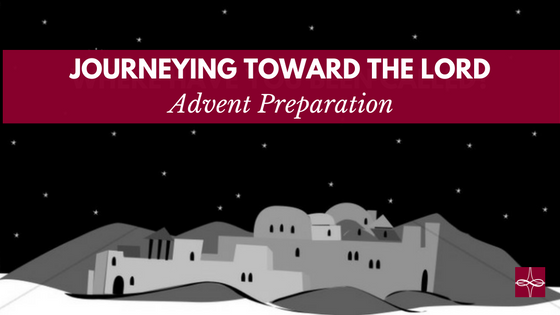
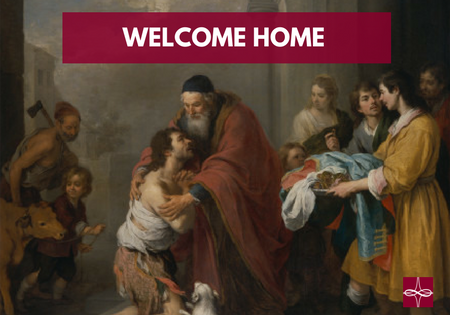

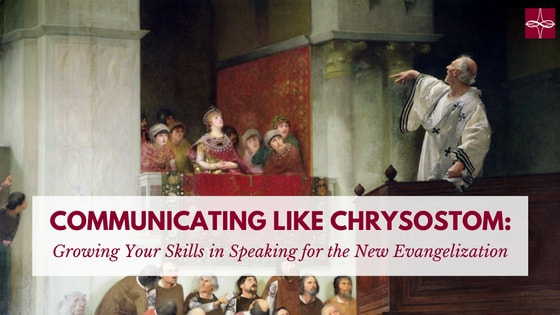

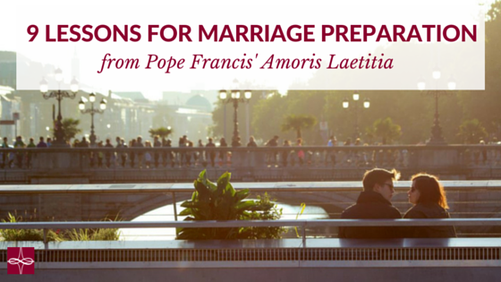

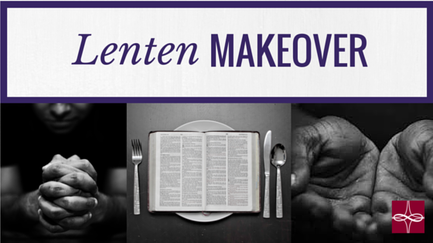

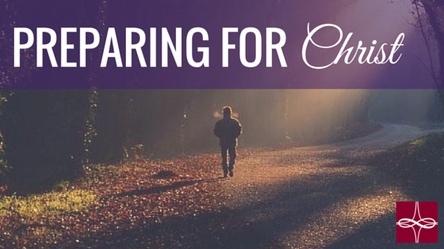

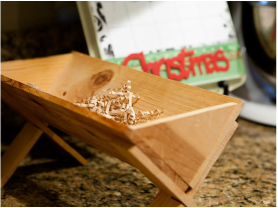
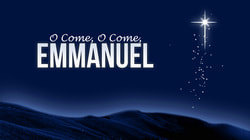


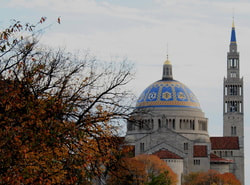

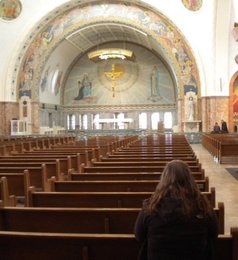
 RSS Feed
RSS Feed